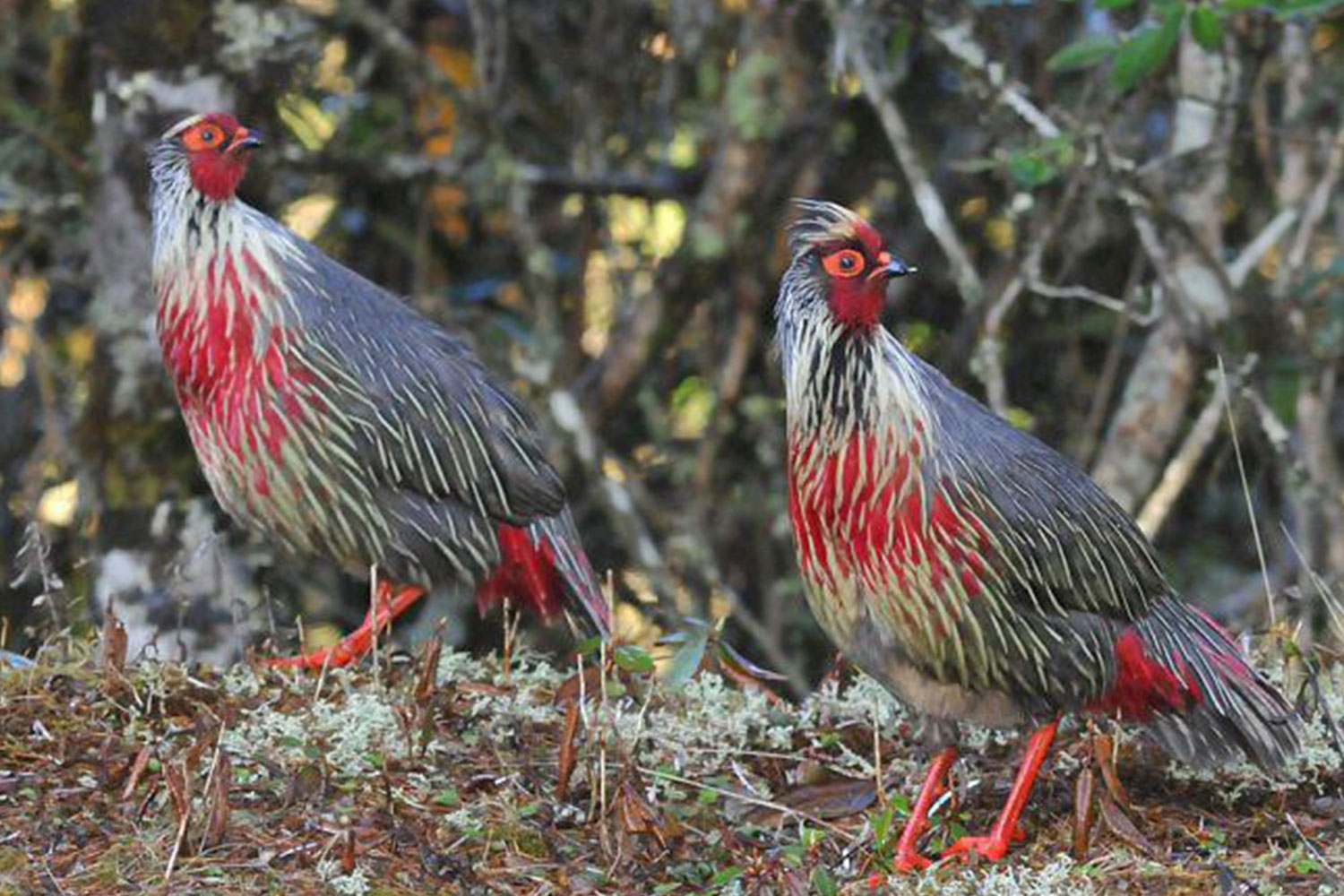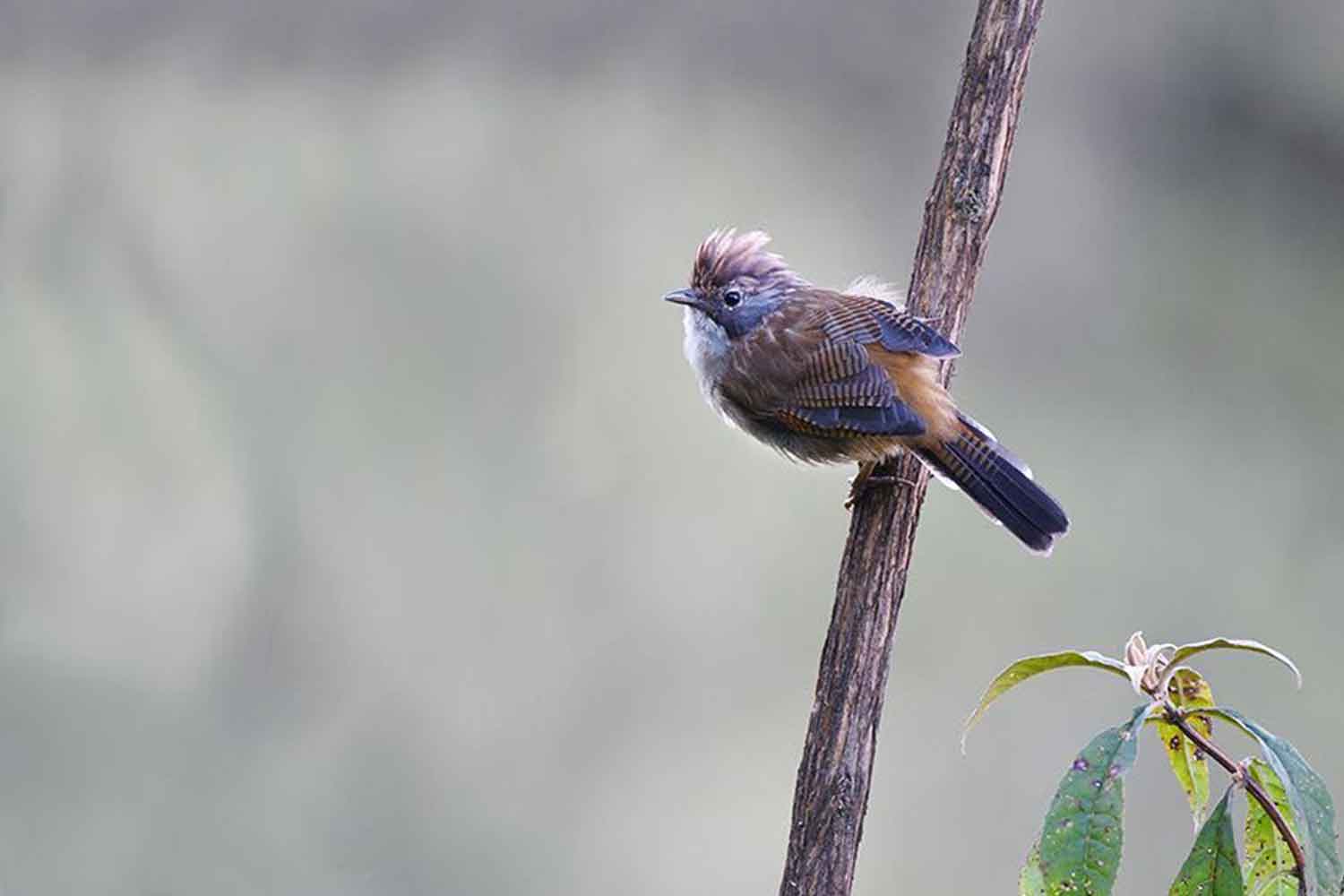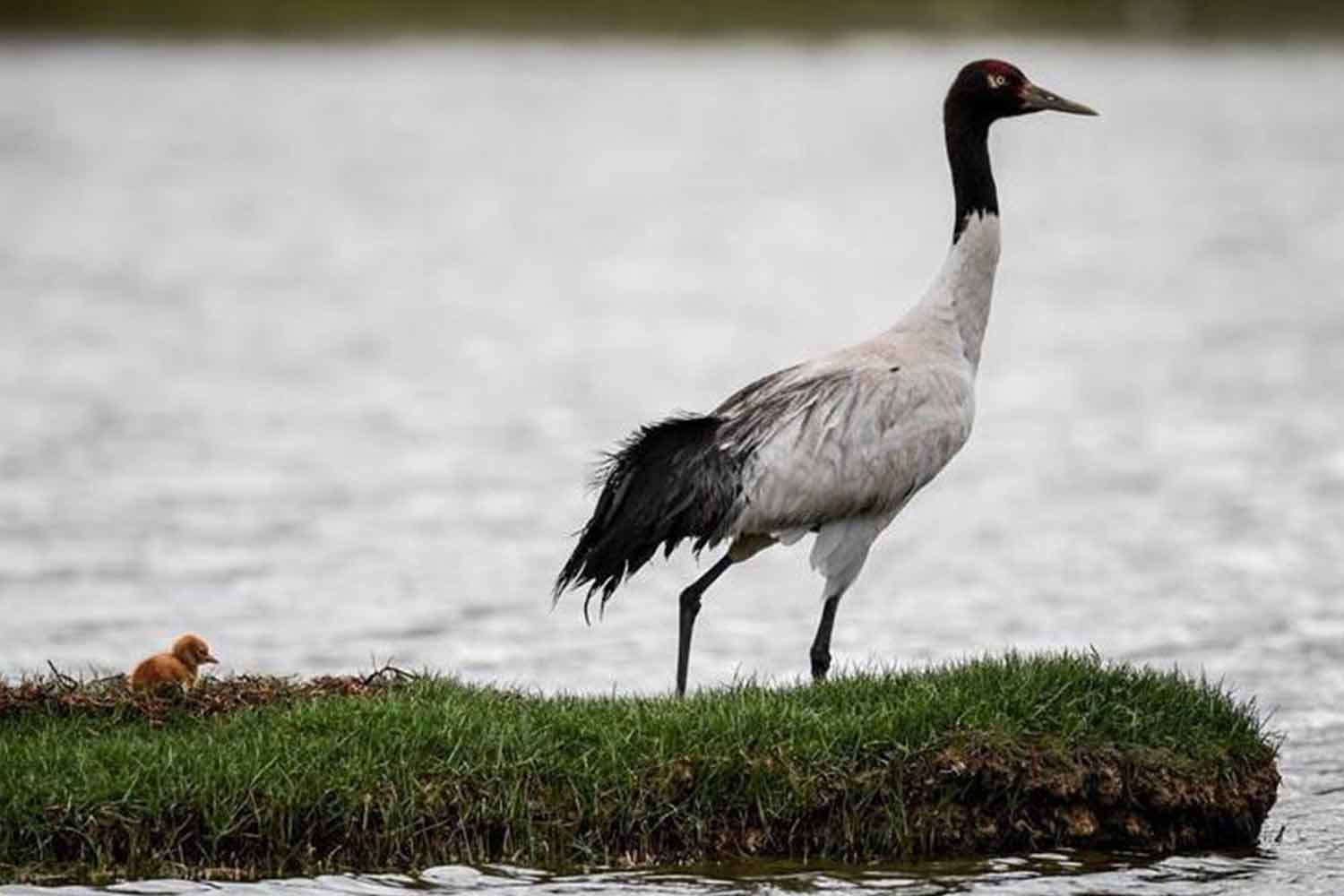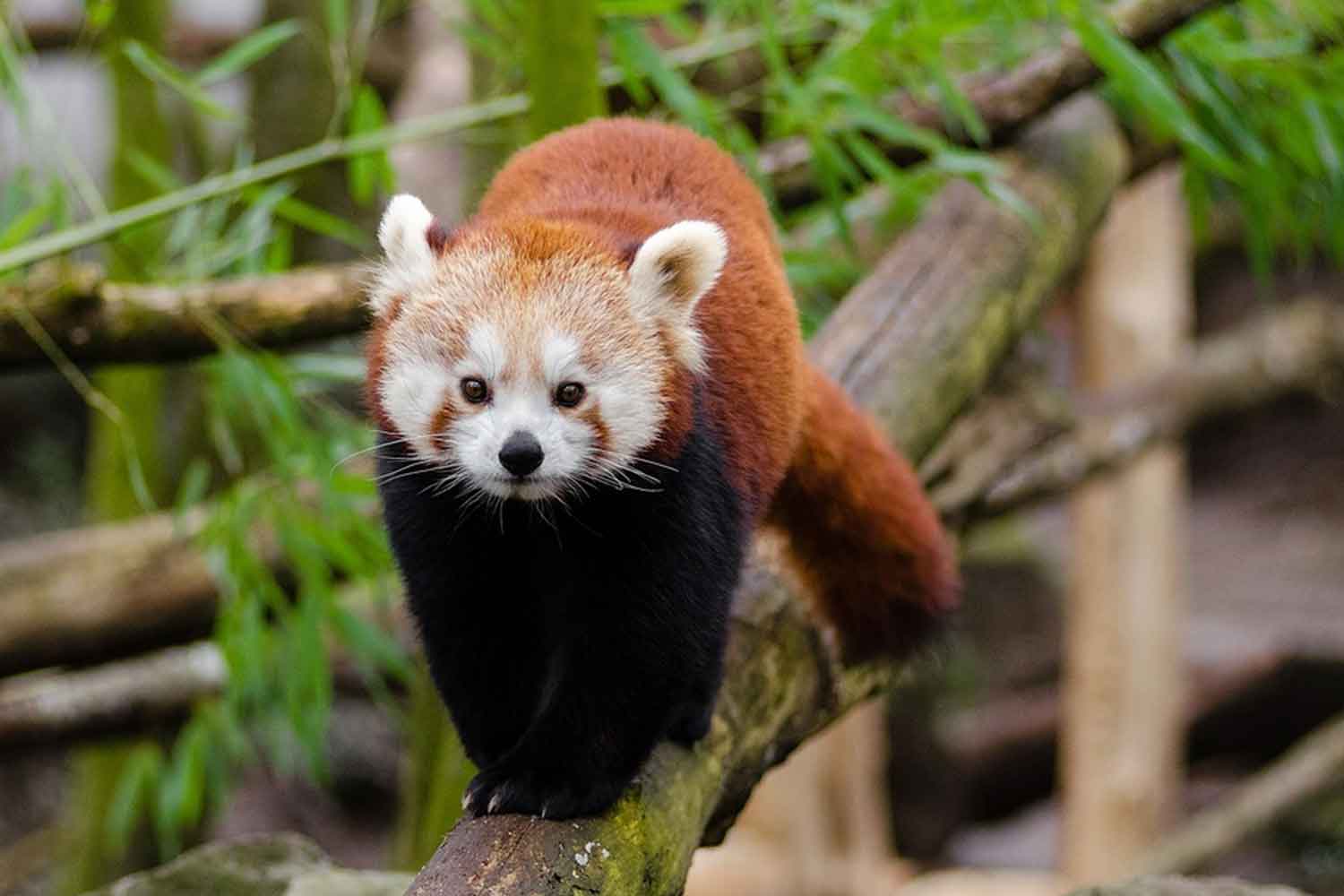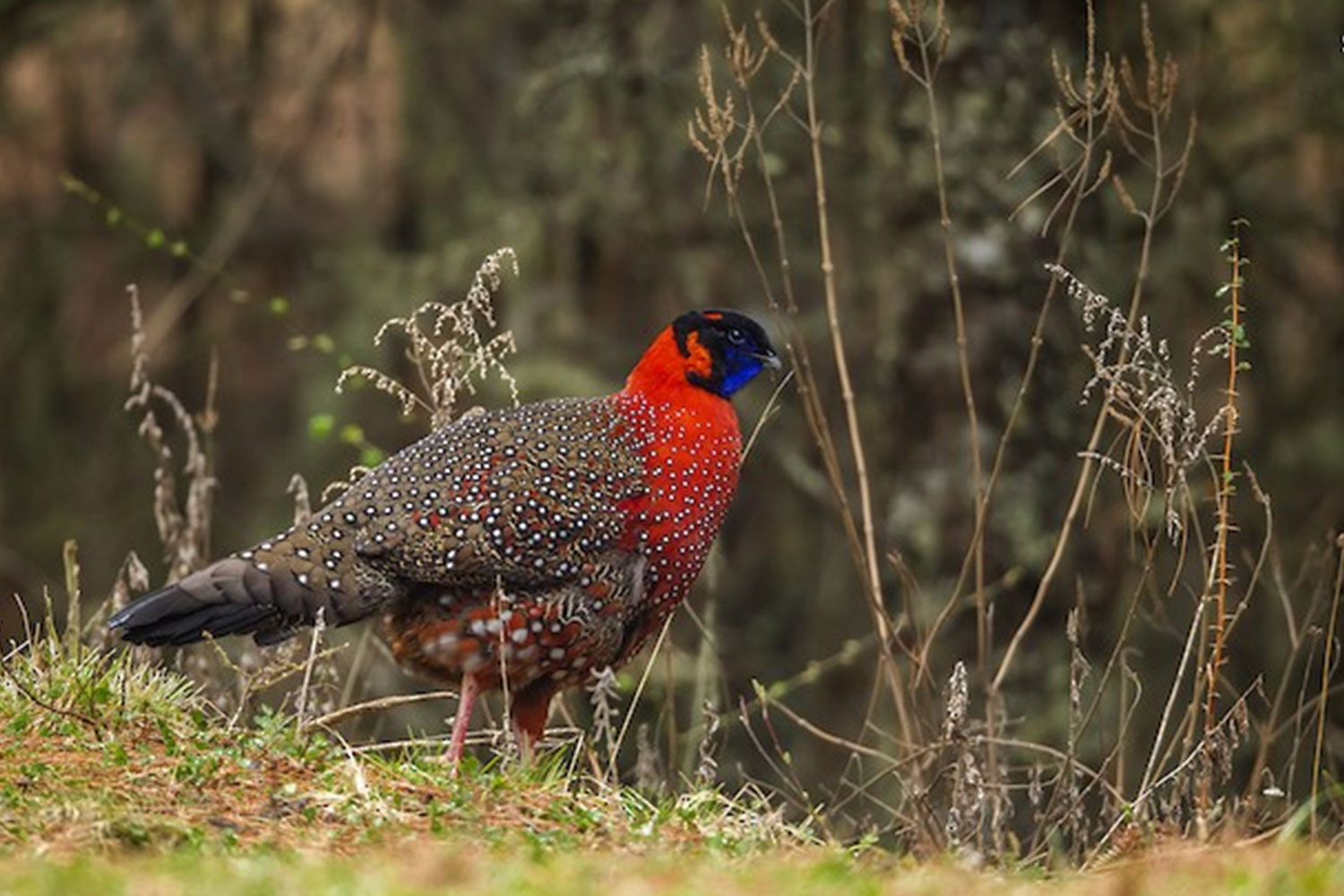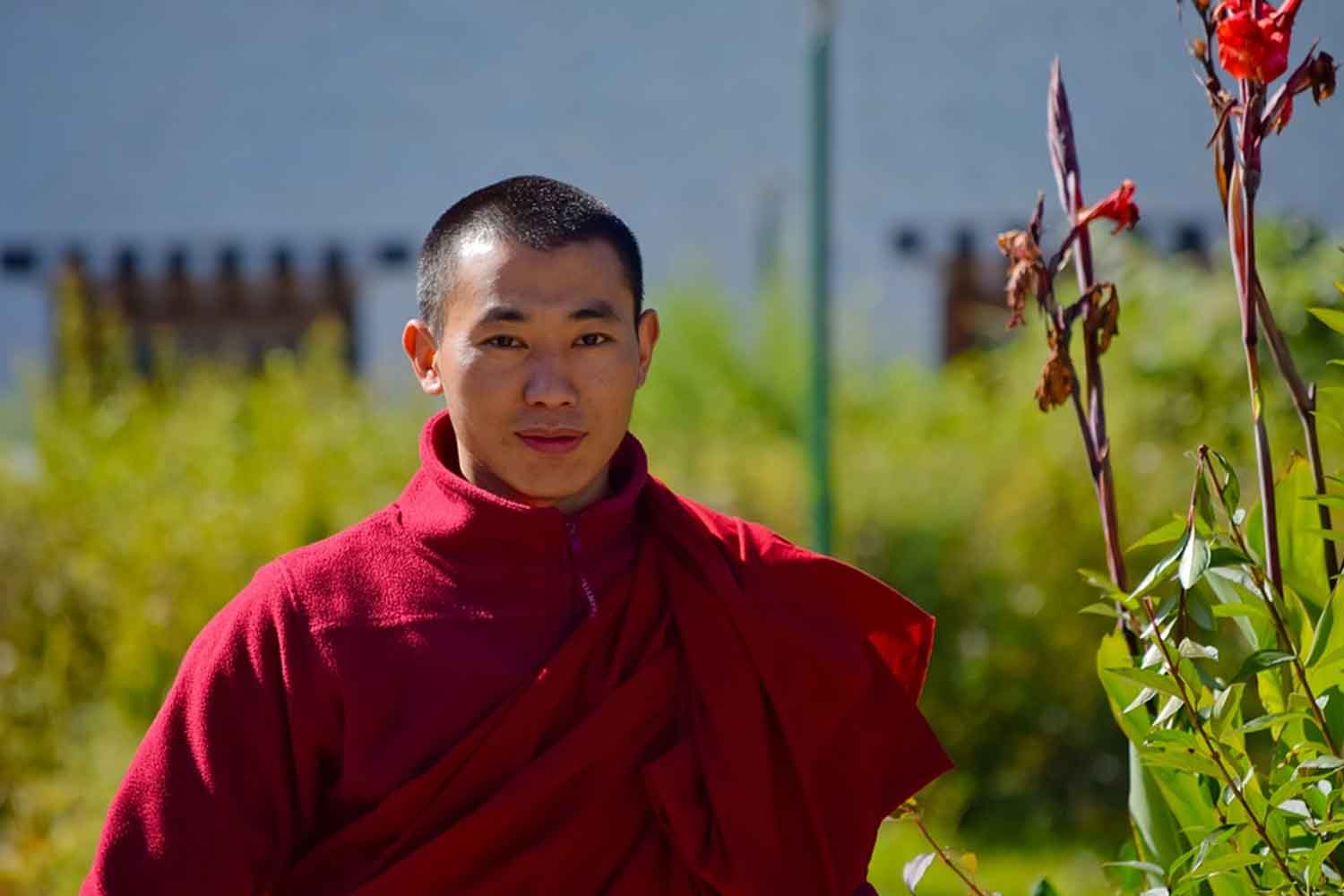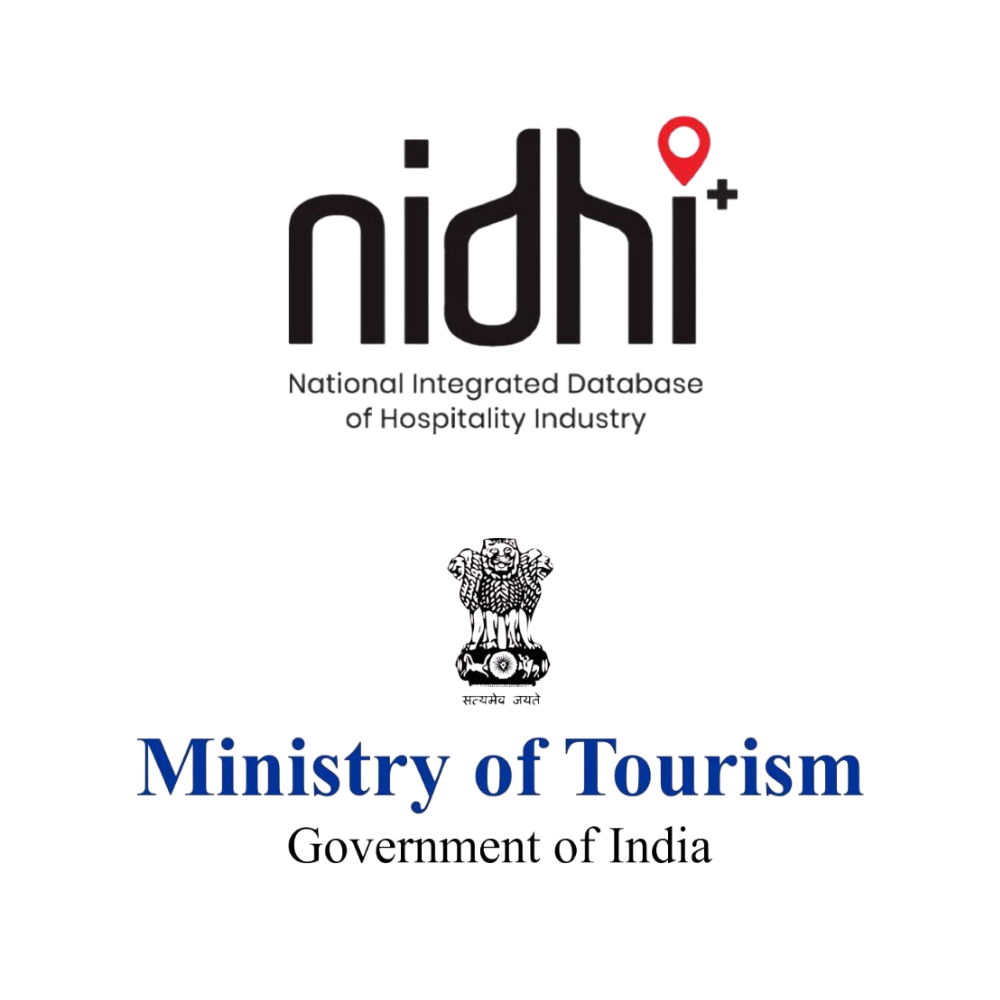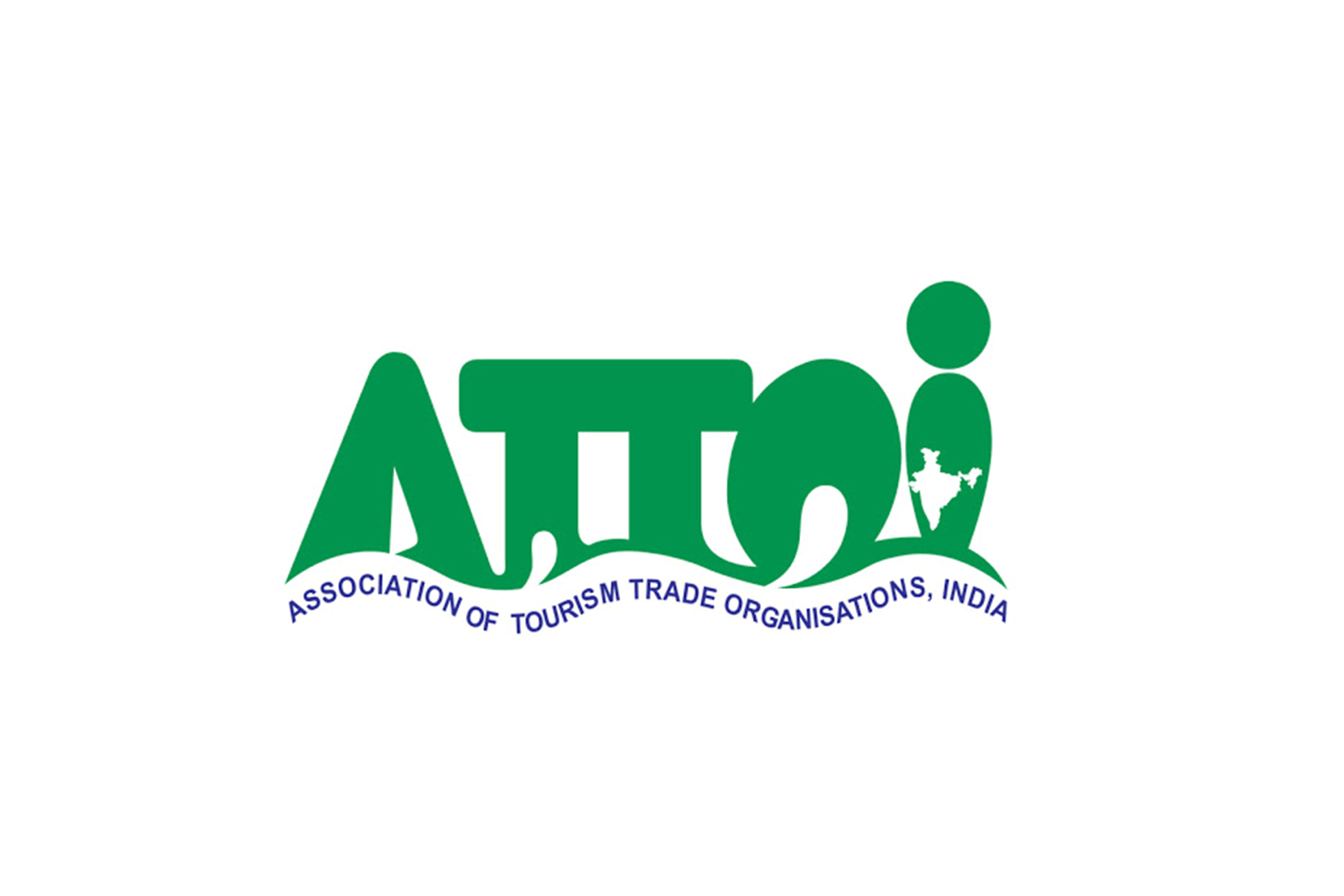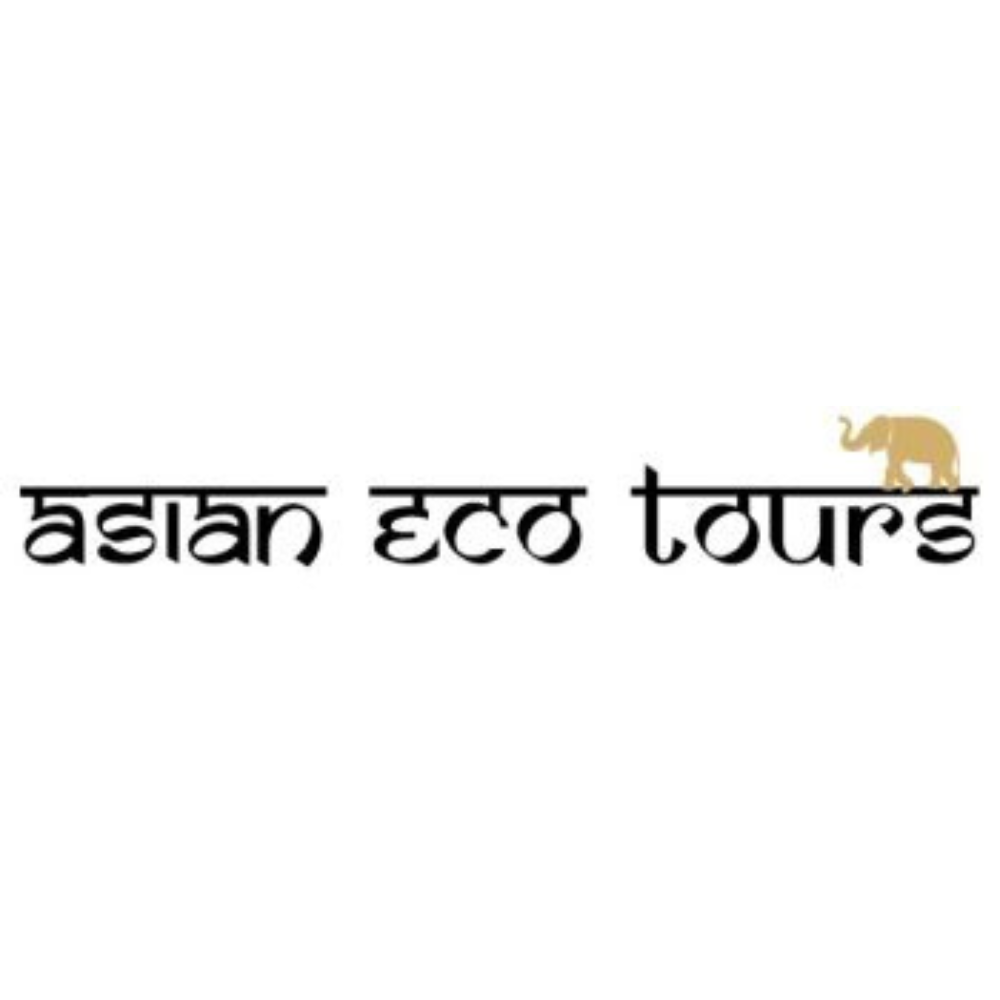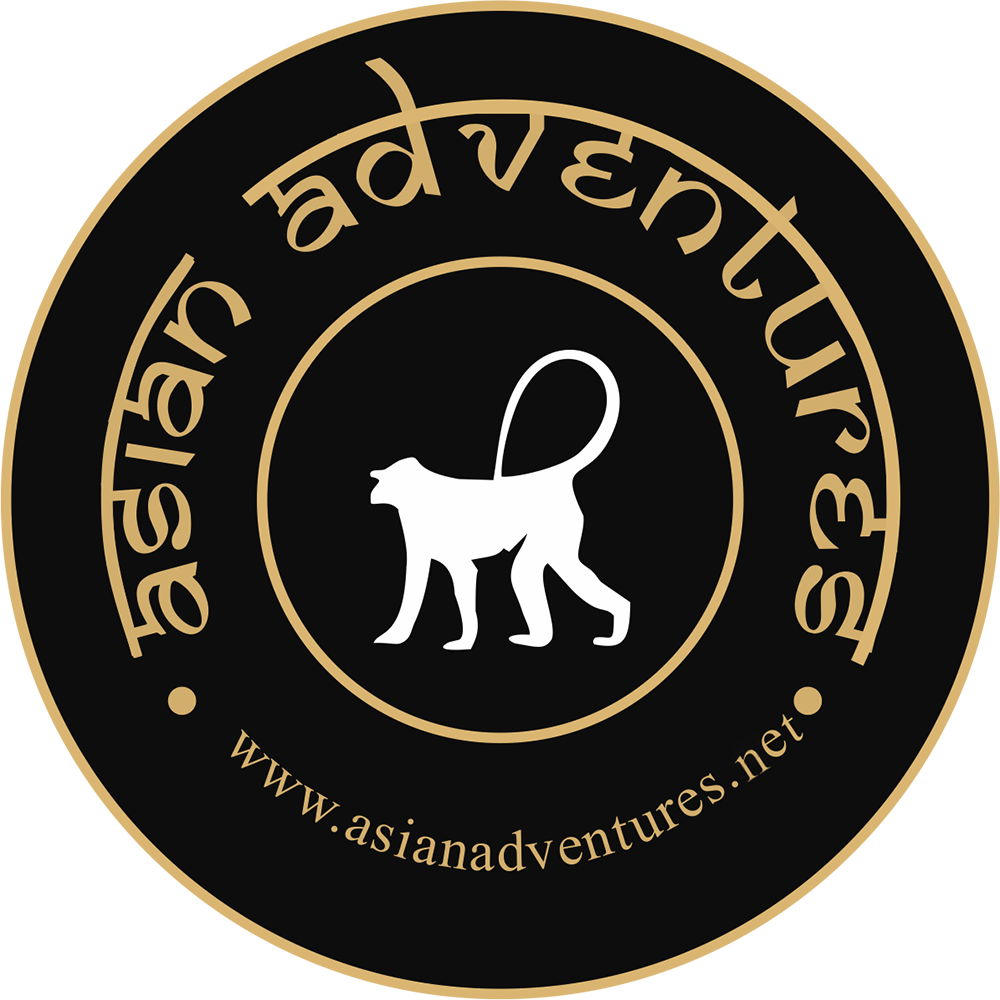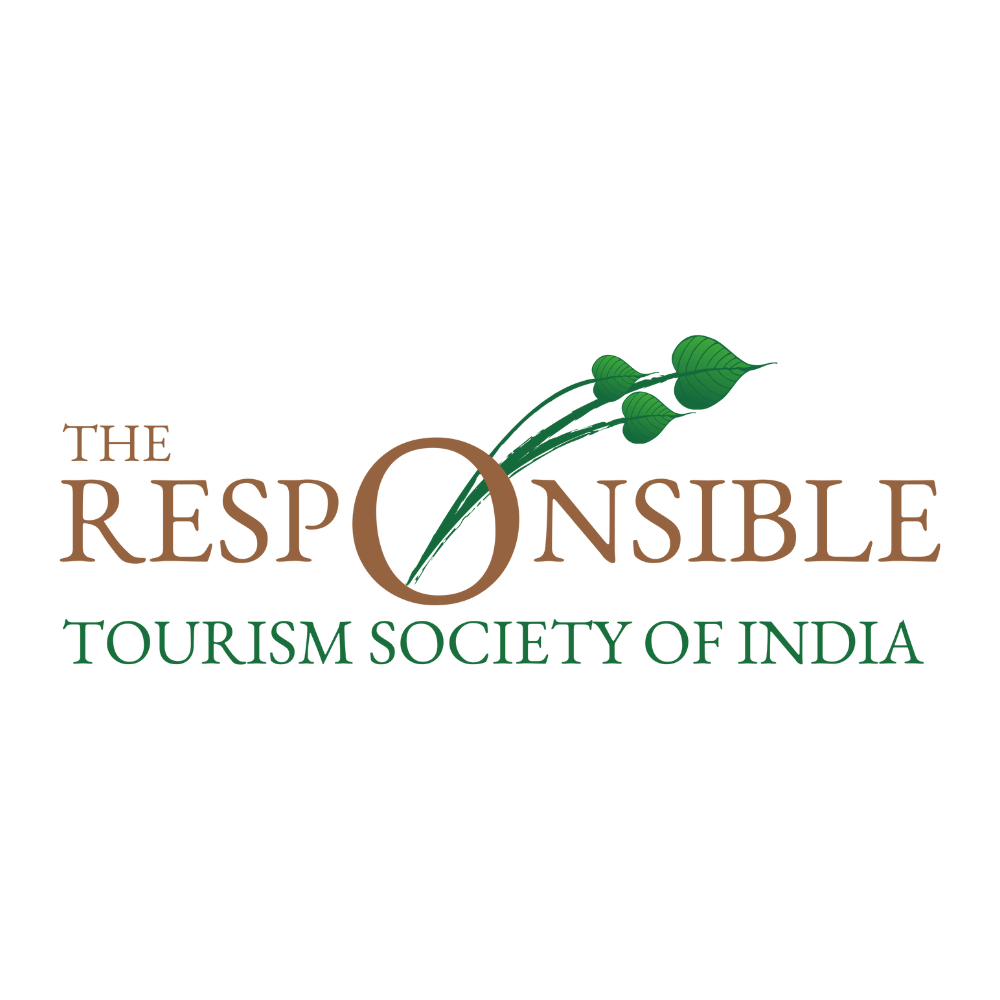Overview
Bhutan has been protected by both its isolation within the Himalayas and the topography of its mountainous land, resulting in over 70% of the land remaining forested with approximately 25% protected by 10 National Parks and Wildlife Sanctuaries. The diverse range of environments varies from sub-tropical at 150 m to alpine over 4,500 m, supporting a natural habitat and wide range of ecosystems with rich and varied bird-life, flora, and fauna. Our Bhutanese tour leader is a birding expert and an accredited naturalist who will ensure that your trip through this varied and beautiful landscape is full of birding excellence.
Birdwatchers will find themselves in breathtaking surroundings looking for legendary species in pristine and seemingly endless forests, such as Himalayan Monal, Satyr Tragopan, Blood Pheasant, Rufous-necked Hornbill, Ward’s Trogon, Beautiful Nuthatch, Himalayan Cutia, Black-necked Crane, and a whole host of other spectacular species, including the “newly split” Black-rumped Magpie.

Meals: On Own
Accommodation: Hotel Shanti Palace
Arrive in Delhi in the evening. You will meet our representative and be transferred to the hotel.
Overnight stay.

Meals: Breakfast in Delhi and Dinner in Samdrup Jongkhar
Accommodation: Hotel Tashi Gassel, Samdrup Jongkhar (300 m)
Transfer to the airport for a flight from Delhi to Guwahati. At the airport, you will be met by Asian Adventures representatives who will drive you to Samdrup Jongkhar. Along this drive keep an eye out in the fields for the rare Lesser and Greater Adjutants, Little Cormorant, White-throated Kingfisher. The Bhutanese hosts will greet you at the Bhutan gate in Samdrup Jongkhar and take you to our hotel for your first night in Bhutan. After checking into the hotel, as time allows we will bird in the surrounding area looking for Indian Pond and Striated Herons, Black-crowned Night Heron, Little and Eastern Cattle Egret, Pied Myna, Common Myna, Great Myna, Rose-ringed Parakeet, Common, and Mountain Tailorbirds, Oriental Magpie-Robin, Yellow-footed Green Pigeon, Black-hooded Oriole, Common Iora, Green Bee-eater and with a bit of luck the very rarely seen Blyth’s Kingfisher, Dark-rumped Swift and Black-backed Forktail.
Overnight stay.

Meals: Breakfast, Lunch, and Dinner
Accommodation: Dungsam Trashiling Resort, Deothang, (800 m)
Today we will spend time exploring the tropical forest between Samdrup Jongkhar and Deothang. Here we will look for species such as Mrs. Gould’s Sunbird, Little and Streaked Spiderhunters, Golden-fronted Leafbird, Indian Paradise Flycatcher, Blue-eared Barbet, Coppersmith and Lineated Barbets, Greater Racket-tailed Drongo, Green-billed Malkoha, Long-tailed Sibia, White-rumped Shama, Thick-billed Warbler, Pin-striped Tit- and Grey-throated Babblers, Black-naped Monarch, Asian Fairy-bluebird, Oriental Dollarbird, Oriental Pied, Wreathed & Great Hornbills, Violet Cuckoo, and more.
Overnight stay

Meals: Breakfast, Lunch, and Dinner
Accommodation: Druk Deojung Resort, Trashigang, (1100 m)
Drive to Trashigang (170 km). Birding along Morong and Narphung valleys. We will start early to get to Morong valley where we will bird these superb forests with opportunities to study birds such as White-browed Shrike Babbler, Cutia, Rusty-fronted Barwing, Long-tailed Sibia, Beautiful Nuthatch (rare and only a few known sites in Bhutan), Red-tailed and Blue-winged Minlas, Hill Partridge, Kalij Pheasant, Bay, and Crimson-breasted Woodpeckers, Greater and Lesser Yellownapes, Golden-throated and Great Barbets, Mountain Tailorbird, Red-headed Trogon, Himalayan Swiftlet, Blyth's and House Swifts, Collared and Asian Barred Owlets, Wedge-tailed Green Pigeon, Eurasian Sparrowhawk, Besra, Northern Goshawk, Steppe and Bonelli’s Eagles, Orange-bellied Leafbird, Long-tailed, and Grey-backed Shrikes. After breakfast, we will continue our birding whilst enjoying the spectacular view of the hills, isolated farms, and tiny hamlets to Trashigang. Species we may encounter include: Yellow-billed Blue Magpie, Grey Treepie, Eurasian Jay, Large-billed Crow, Maroon Oriole, Long-tailed Minivet, Yellow-bellied, and White-throated Fantail, Ashy and Black Drongos, Blue Whistling Thrush, Long-billed Thrush (rare), Ultramarine and Little Pied Flycatchers, Large and Rufous-bellied Niltavas, Spotted Forktail, Siberian Stonechat, White-tailed Nuthatch, Fire-capped, Green-backed, and Rufous-fronted Tits, Striated, Mountain, Black, and Red-vented Bulbuls, Aberrant Bush Warbler, Ashy-throated, Chestnut-crowned, and Lemon-rumped Warblers, Striated, White-throated, and Chestnut-crowned Laughingthrushes, Rusty-cheeked and Streak-breasted Scimitar Babblers, Rufous-throated and Spotted Wren-Babblers, Red-billed Leiothrix, Green-tailed, and Mrs. Gould’s Sunbirds, Russet and Eurasian Tree Sparrows, White Wagtail, Olive-backed Pipit, Maroon Accentor (rare), Yellow-breasted Greenfinch and Tibetan Siskin.
Overnight stay.

Meals: Breakfast, Lunch, and Dinner
Accommodation: Trogon Villa, Yongkola (1,800 m)
Early morning birding at Kore La Pass (2,450 m), after breakfast continue to Yongkola stopping along Lingmethang road. We will leave Trashigang after a hot cup of tea/coffee as there are no productive birding areas in the immediate vicinity. The journey takes us through Sherichhu from where the road climbs by means of 10 hairpin bends, known as the Yadi Loops, in just 10 km. From here we continue to the little village of Yadi. The road passes fields of corn and broad-leaf forests where we will stop and bird before our final ascent to Kore La 2,450 m. Here amongst other species, we may find Brown Bullfinch, Scarlet Finch, Grey-winged Blackbird, Brown-throated Treecreeper, and Grey-sided Laughingthrush. Crossing the pass we descend through cool broadleaved trees, dripping with exotic orchids, fern-lined forests of rhododendrons, where again we will stop to bird hoping to see in these pristine environs: Maroon Oriole, Common Rosefinch, Hill Prinia, Fire-capped Tit, Bhutan Laughingthrush, Rufous-bellied Woodpecker, Asian Barred Owlet, Gold-naped Finch, Kalij Pheasant, and Barn Swallow. Climbing back into our vehicles, we continue our descent to the town of Mongar and onto the sub-tropical forests around Lingmethang at 650 m. From here superlatives continue to describe the journey as we begin our climb to the broadleaf forests at Yongkola 1,700 m where we will stay for 3 nights.

Meals: Breakfast, Lunch, and Dinner
Accommodation: Trogon Villa, Yongkola
The warm broadleaf forests provide the perfect environment for many avian species including many of Bhutan’s sought-after birds. And so we will spend a full day birding in the upper and lower Yongkola region. In this breathtaking landscape, we will bird in a protected area of pristine forests using a paved yet rarely used road, providing the ultimate beneficiary birding opportunities. It is here in this birding hotspot that we can look for: Ward’s Trogon (rare), Slender-billed Scimitar Babbler and Rufous-throated Wren-Babbler (a little known and endangered species), Black-headed Shrike-babbler (rare and the only known site for Bhutan), Satyr Tragopan (rare), Bar-winged Wren-Babbler, Blue-winged Laughingthrush, White-breasted Parrotbill and perhaps Gould’s Shortwing. After birding the upper elevations above Yongkola, acknowledged as one of the great birding roads of the world, we will slowly descend to Yongkola at approximately 1700 m. We have time to explore the wonderfully rich, subtropical, warm, and cool, broad-leaved forests along the lower section of this road where ancient trees are festooned with orchids adding a riot of color to this verdant land. Trails criss-cross the forests, but few birders venture far into their depth consequently, exactly what avian delights may be around the corner maybe a complete surprise. Here we should encounter: Hill, Rufous-throated and Chestnut-breasted Partridges, Rufous-bellied and Crested Serpent Eagles, The rare Rufous-necked Hornbill (the forests of Bhutan are the stronghold for this impressive species), Speckled Wood Pigeon (another rare bird), Blue-bearded Bee-eater and two of the Himalayas’ rarest birds, the Cobalt Blue-fronted Robin and the elusive and strange Sikkim Wedge-billed Babbler. Other regularly seen species include; Bay Woodpecker and Lesser Yellownape, Golden-throated and Blue-throated Barbets, Large Hawk- and Himalayan Cuckoos, Collared Owlet, Grey Treepie, Grey-chinned, Short-billed and Long-tailed Minivets, Yellow-bellied Fantail, Blue-capped Rock Thrush, Verditer Flycatcher, Large Niltava, Hodgson’s Redstart (in farmland at the edge of the forest), Plumbeous Water Redstart (males can be seen vigorously defending streamside territories), Slaty-backed Forktail, Rusty-flanked Treecreeper, Sultan, Black-throated, Rufous-fronted, Yellow-browed, and Yellow-cheeked Tits, Mountain and Ashy Bulbuls, Hill and Himalayan Prinias, Chestnut-headed, Slaty-bellied, and Grey-bellied Tesia, Grey-sided Bush Warbler, Grey-hooded, White-spectacled, Chestnut-crowned, Broad-billed and Black-faced Warblers, White-crested, Striated, Rufous-necked, Grey-sided, and Blue-winged Laughingthrushes.

Meals: Breakfast, Lunch, and Dinner
Accommodation: Trogon Villa, Yongkola
Exploring the bird-rich Thrumshing La National Park.
We will also rise early to drive to Sengor for the early morning birding, here we will look for the rare Satyr Tragopan and the Bar-winged Wren-Babbler amongst commoner species such as Grey-crested, Coal, Green-backed, Yellow-browed and Black-browed Tits; Mrs. Gould’s, Green-tailed and Fire- tailed Sunbirds, Rufous-gorgeted Flycatcher, Ashy-throated, Lemon-rumped, Large-billed and Blyth’s Leaf Warblers, White-browed and Rufous-winged Fulvettas, Stripe-throated Yuhina, Fire-tailed Sunbird, White-throated Redstart and Green Shrike-babbler.
Overnight stay.

Meals: Breakfast, Lunch, and Dinner
Accommodation: Chumey Nature Resort, Chumey, (2,800 m)
Drive to Chumey. Birding along Sengor valley and Thrumshing La (3,780 m).
We will bird along the upper Yongkola region before breakfast after which we will drive up to the high pass of Thrumshing La at 3,799 m, where we have breathtaking views of the eastern Himalayas. As we drive up to the pass we will stop at key locations for birding, looking for Himalayan Buzzard, Mountain Hawk-Eagle, Great and Fulvous Parrotbills, Chestnut-bellied Rock Thrush, White-collard Blackbird, Himalayan Bluetail, White-browed Bush Robin, Blue-fronted Redstart, Eurasian and Rusty-flanked Treecreepers, Hume’s Bush Warbler, Black-faced, and Spotted Laughingthrushes, Red Crossbill, Red-headed Bullfinch, White-winged Grosbeak, Eyebrowed, Dusky and Black-throated thrushes and on our 2016 tour we have seen Kessler’s Thrush (rare and Vagrant to Bhutan). From the pass, we descend through forests of towering hemlocks, spruce, Silver fir, and larch which are particularly good for species like Himalayan Monal, Blood Pheasant, and Satyr Tragopan. We travel through the picturesque village of Ura to Chumey village and our hotel for the night.
Overnight stay

Meals: Breakfast, Lunch, and Dinner
Accommodation: Tangbi Guesthouse, Tangsibji, (2,200 m)
Birding at Tharpaling Monastery and drive to Tangsibji (85 km)
After a hot drink, we will leave in order to drive through the pine forests, cross the Chumey Valley to Gyeltsha, from here we will take a short detour to Tharpaling monastery where we look for Himalayan Monal, Blood Pheasant, and Satyr Tragopan. After having breakfast we will make our way back to the main road and onto Yotong La at 3,353 m. From the pass, we will slowly descend down through mix rhododendron forest where we will look for; Fire-tailed Myzornis, Chestnut-headed Tesia, Rufous-vented Yuhina, Black-faced Laughingthrush, Yellow-bellied Flowerpecker, Darjeeling Woodpecker and White-winged Grosbeak, Great and brown Parrotbill, Red-headed Bullfinch, Stripe-throated and Whiskered Yuhinas. In Trongsa we will visit the 17th century Ta Dzong (watchtower), which sits on the hill above the Dzong, it was built to protect and has recently been converted into an excellent museum providing visitors with an insight into the significance of Trongsa in Bhutan’s history, as well as displays focusing on Buddhist art and royal memorabilia. From the wide, sweeping terrace there are magnificent views of the valley and river far below, before continuing our journey to Tangsibji village.
Overnight stay.

Meals: Breakfast, Lunch, and Dinner
Accommodation: Meri Puensum Resort, Punakha (1,300 m)
We will rise early to get some birding done along the Chendibji – Pele La road looking for; Bhutan and Chestnut-crowned Laughingthrushes, Streaked-breasted Scimitar Babbler, Common Kestrel, Red-billed Leiothrix, Bar-throated Minla, Green Shrike Babbler, and more. After a hot picnic breakfast the road will take us through the village of Khelekha and Chuzomsa to Punakha. Along this road, we will look for birds such as; Rufous-chinned Laughingthrush, Blyth’s Shrike-babbler Shrike-babbler, Black-eared Shrike-babbler, Grey-headed Woodpecker, Greater Yellownape, and Speckled Piculet. In and around our hotel at Punakha, we will look for Slender-billed Oriole, Grey Nightjar and Collared Scops Owl.
Overnight stay.

Meals: Breakfast, Lunch, and Dinner
Accommodation: Meri Puensum Resort, Punakha, (1,300m)
Visit the Jigme Dorji National Park in the morning and afternoon visit the magnificent Punakha Dzong. We will rise early to get to Rimchhu valley to enter the Jigme Dorji National Park for the morning birding. The forest is pristine at an elevation of 1,300 m where we should encounter Red-headed Trogon, Greater Yellownape, Red-vented, Striated, Black and Mountain Bulbuls, Orange-bellied Leafbird, Large and Small Niltavas, Little and Slaty-backed Forktails, Spotted Elachura, Nepal Fulvetta, Rufous-capped Babbler, Blue-winged Minla, Whiskered Yuhina, Slaty-bellied Tesia, Ashy and Hair-crested drongos, Tibetan Siskin, Spot-winged Grosbeak, Speckled Piculet, Rufous Woodpecker, Pallas's Fish-eagle, Great Black-headed Gull, Crested Kingfisher, and Scaly-breasted Munia. Towards mid-day when the birding lessons, we will return to Punakha and spend time exploring the Dzong where we will get a glimpse of Bhutanese religion and culture. Inside the Dzong, there are many detailed frescos and magnificent carvings showing the creative skills of our artists and just two of our thirteen traditional arts. It is seen to its best in the afternoon sunshine when the richness of the paintings can be fully appreciated. Perhaps the most spectacular building is the Kuenrey or Assembly Hall with its huge statues of Buddha, Guru Rinpoche, and the Zhabdrung under a truly spectacular ceiling featuring hundreds of painted dragons. Punching Dechen Phodrang (Punakha Dzong) is an impressive Dzong that sits comfortably in its superb setting and as the translation states, is a Palace of Great Bliss.
Overnight stay.

Meals: Breakfast, Lunch, and Dinner
Accommodation: Hotel Olathang, Paro, (2300 m)
Drive to Paro (125 km / 3.5 hr.) with birding stops at Lampelri Botanical Park and at Dochu La pass for majestic mountain views. This morning we leave the terraced fields and sub-tropical forests around Punakha and travel to Royal Botanical Park at Lampelri, which forms one of the critical biological corridors connecting the Jigme Singye Wangchuck National Park and the Jigme Dorji Wangchuck National Park. It has cool broadleaf forests, mixed conifer forests, fir, and subalpine forests, and a temperate rain forest with hundreds of species of flora and fauna. Here we will look for: Chestnut-crowned Warbler, Dark-rumped, and Dark-breasted Rosefinches, Rufous-capped Babbler, Slender-billed Scimitar Babbler, Grey-sided Laughingthrush, Brown Parrotbill, and Eurasian Jay. With a bit of luck, we may also encounter rare species of mammals that the park supports; Musk Deer, Tiger, Leopard, Red Panda, and the Leopard Cat. Returning to our vehicles we will continue to Dochu La, an awe-inspiring sight with the road festooned with prayer flags and 108 chortens. From here on a clear day, there are magnificent panoramic views of the high Himalayas, including Masagang 7,158 m, Tsendagang 6,960 m, Terigang 7,060 m, Jejegangphug 7,158 m, Kangphugang 7,170 m, Zongphugang 7,060 m and Gangkar Puensum - the highest peak in Bhutan at 7,497 m. From the pass, we drive down to Thimphu where we will stop by a marshy land near Babesa looking for Black-tailed Crake.
Overnight stay.

Meals: Breakfast, Lunch, and Dinner
Accommodation: Hotel Olathang, Paro (2300 m)
Today you will have a fabulous last day in Bhutan with a great mix of birding and some of the Paro Valley's cultural treasures. The cultural highlight will be the walk up to the famous Tiger's Nest, Taksang Monastery. The monastery is perched some 600 m up on a cliff overlooking the valley and was said to be where the legendary Indian saint, Guru Padma Sambhava, flew from East Bhutan on the back of a Tiger to defeat demons who were opposing the spread of Buddhism in Bhutan. It is a steep uphill walk through woods, of about 1½ - 2 hr., to reach a tea house (an ascent of 340 m). After a welcome refreshment at the tea house, one of the principal viewpoints of the monastery you will climb the further half hour’s ascent, which brings you to another viewpoint directly across from the monastery. The final section of the walk takes you from this viewpoint steeply down 100 m into the gorge that separates you from the monastery and then climbs back up again to reach the monastery. You will then descend back to the valley floor by your outward route back to where your vehicle will be waiting. The full walk to the monastery and back involves approximately 740 m of ascent. Along this hike we will look for Green-backed, Coal and Grey Crested Tit, White-tailed Nuthatch, Yellow-billed Blue Magpie, Spotted Nutcracker, Black-faced, Chestnut-crowned, White-throated, and Spotted Laughingthrushes. Up at the monastery by the rocky ledges, we will scan for flocks of Snow Pigeon and Alpine Accentor while the waterfall next to the monastery often gives us the opportunity to see Little Forktail, White-capped and Plumbeous Water Redstarts. Those not wishing to hike to Taksang can leave early a journey up through ancient pine and fir forests to Chele La Pass (3,780 m), where there are fantastic views of the high Himalayan peaks of Jhomolhari (7,219 m), Jichu Drake (6,989 m) and down into the Paro and Ha valleys. Chile La gives us the opportunity to ascend above the tree line into alpine meadows and dwarf rhododendron scrub, here we have the possibility of finding the beautiful Himalayan Monal, Blood Pheasant, Himalayan Vulture, Kalij Pheasant, Spotted, Black-faced and Chestnut-crowned Laughingthrushes, Brown Parrotbill, Common Kestrel, White-collared Blackbird, Grey-backed Shrike, Blue-fronted Redstart, Fire-tailed Sunbird, Himalayan Bluetail, Rufous-breasted, and Alpine Accentors and the beautifully colored Himalayan White-browed Rosefinch. After breakfast we will continue birding in this beautiful area before gradually making our way back to Paro where we will stop by the Pa Chhu, looking Ibisbill, camouflaged amongst the glacial stones.
Overnight stay.

Meals: Breakfast in Paro and Dinner in Delhi
Accommodation: Hotel Shanti Palace
Today, take a flight from Paro Airport to Delhi (2.5 hr.). Reach Delhi.
Overnight stay

Meals: Breakfast
Accommodation: None
You will be transferred to Delhi Airport for your onward journey.
Tour Ends.
Highlights
- Birding
- Wildlife and Nature
- Photography
- Bhutan Monasteries and Architecture
- Local Cuisine
Included
- Arrival and departure transfers in Delhi Accommodation in Delhi for first and last night
- Flight ticket from Delhi to Guwahati Bhutan Visa and Tax
- Tour Guide who is expert in the field in Bhutan All activities as mentioned in the itinerary in Bhutan
- All accommodation in Bhutan based on sharing twin room All meals as specified in the itinerary
- Tea / Coffee and snacks in Bhutan Bottled water throughout the trip in Bhutan
- All ground transportation as per the itinerary All necessary camping equipment’s in Bhutan
- All entrance fees in Bhutan and Delhi Flight ticket from Paro to Delhi
Video
Location
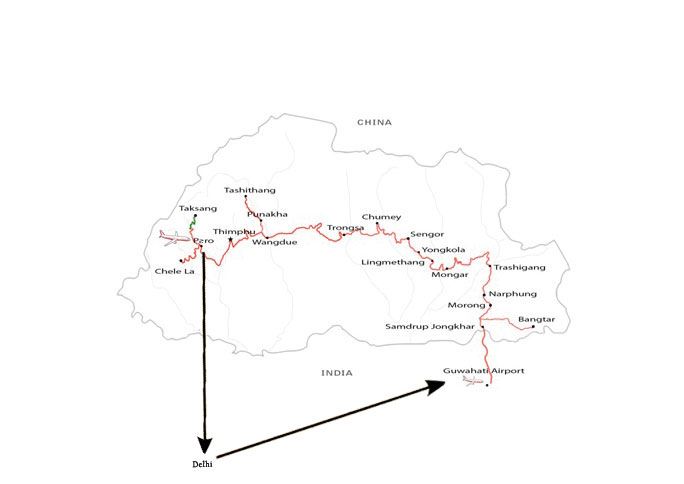
Stories
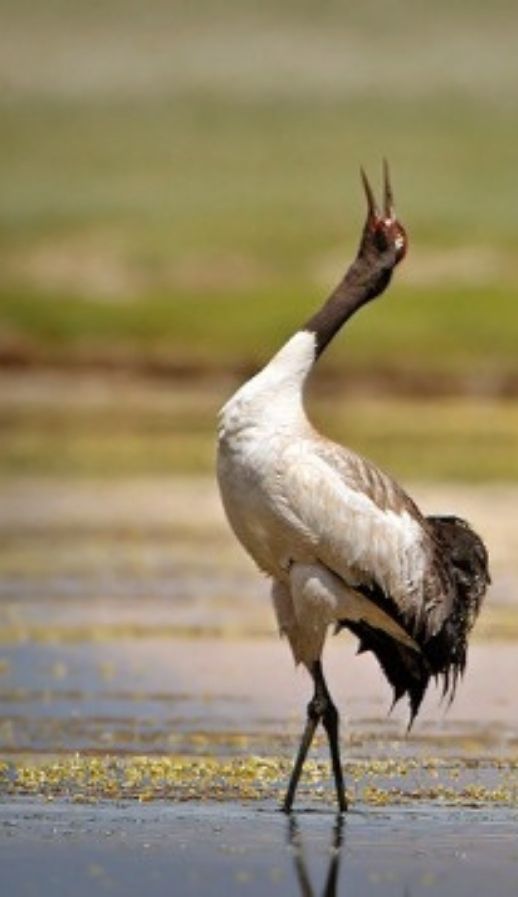
Ladakh
North India, the land of Ladakh, looks as though it was made for birdwatching and photography.

Gir National Park Gujarat
Sometimes it is not just the species spotted but also the amazing moments. Some of our guests had the unique opportunity to witness the mating of Asiatic Lions in the Gir Forest, truly a special moment.

Delhi
Surajpur is an amazing wetland close to the nation’s capital. Apart from being one of the monsoon homes for the Bristled Grassbird, it is also home to another sought-after species: the Bengal Bush Lark.

Rajasthan
One advantage of living near the birding hotspot of Bharatpur is that you can see some amazing birds, like the graceful Sarus Crane, in your backyard during this lockdown



